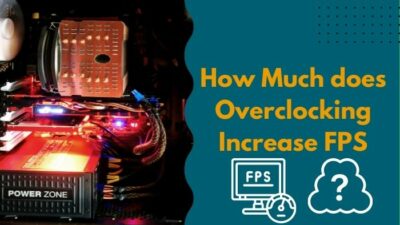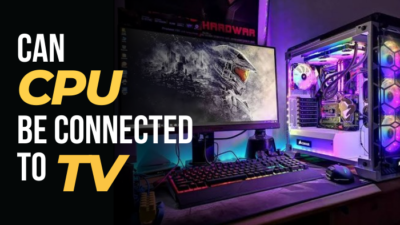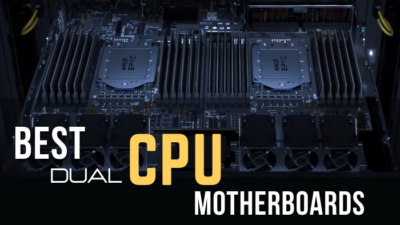CPU spikes are sudden, transitory surges in a computer’s processor. These spikes might cause the system to slow down or become sluggish, which leads many users to ponder if they should be concerned.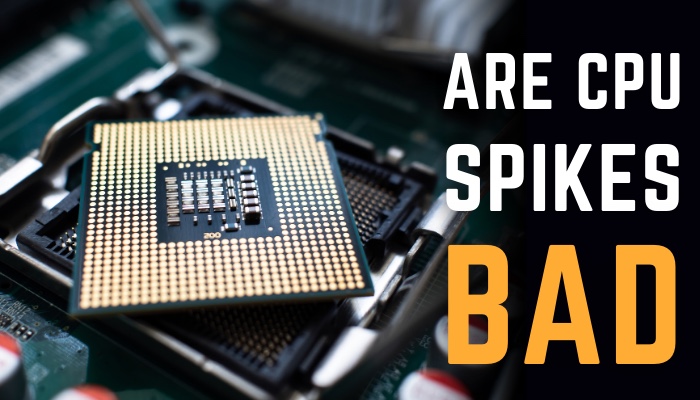
So, in this article, I’ll explain why CPU spikes are terrible for your system and how to fix them.
Let’s get started.
Are CPU Spikes Bad?
Since any running application can create CPU spikes, they are typically not a cause for alarm. If unexplainable CPU spikes harm the user’s computer’s functionality, users must investigate and stop any potentially dangerous apps or activities.
Whenever a CPU spike arises, the computer’s computational power is committed to a single job, leaving other apps tough to use. This process might result in decreased productivity, pauses, and even failures.
Extended high CPU usage might lead the system to overheat and permanently harm its hardware in severe circumstances.
Spyware, problematic drivers, and poorly tuned applications are just a few of the reasons that might cause CPU spikes. In other circumstances, high CPU usage could be a bigger problem, such as faulty hardware or inadequate cooling.
It is essential to update drivers, keep your systems up to date, and regularly run anti-malware tests to minimize CPU surges. You can also utilize performance analysis software to determine the reason for spikes and take relevant action.
What are the Most Common Causes of CPU Spikes?
CPU spikes can occur for a variety of reasons. The principal causes are excessive and continuous consumption, insufficient power supply, and insufficient cooling. Outdated device drivers and Poorly optimized software can also cause high CPU usage.
Other factors can cause CPU spikes. Simply continue reading to learn more about them.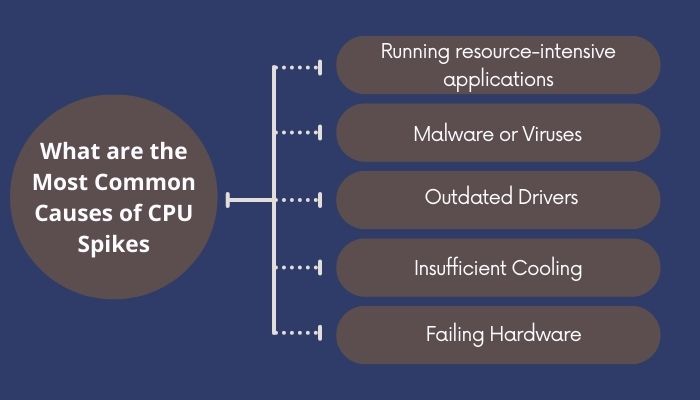
Here are the most common causes of CPU spikes:
Running resource-intensive applications
Programs that employ processing power, like demanding games or video editing software, can create CPU spikes. When each of these processes is active, the CPU is severely overburdened, causing a surge in performance.
Malware or Viruses
Spyware, or harmful programs, can create CPU spikes by using computing power while operating in the background. These viruses might slow down efficiency and potentially cause crashes.
Outdated Drivers
Drivers are software packages that enable your system to interface with hardware devices such as the graphics processing unit (GPU) or the sound card. Older drivers might create stability problems, which can result in CPU spikes.
Insufficient Cooling
If a system is not adequately cooled, the Processor can overheat, resulting in CPU surges. This overheating issue is particularly applicable to high-performance, heat-generating equipment.
Failing Hardware
In certain circumstances, high CPU usage could be a broader issue. For example, a failed hard disk can lead the CPU to surge as it attempts to adapt to the malfunction.
How to Fix CPU Spikes
Users can resolve CPU spikes by updating their system drivers, scanning for malware or unnecessary applications, and disabling unused applications. Adjusting the computer’s power settings and lowering the application’s settings also resolves the high CPU usage issue.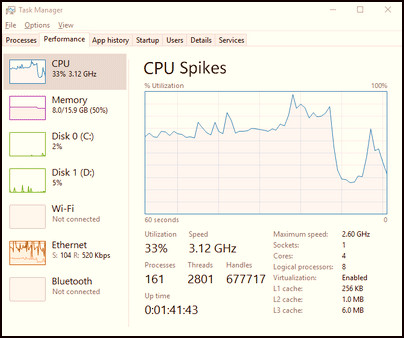
The repair procedure is simple. Follow the steps in the section below to find out what to do.
The following are the methods for repairing the process:
1. Uninstall Unnecessary Programs
Some applications may use more Computational power than others. Manually uninstalling unwanted or resource-intensive programs can assist in reducing CPU spikes.
2. Check for Malware
Malware is a common source of CPU surges. Scan your machine for viruses and other harmful malware with an antivirus tool.
Viruses can cause high CPU usage. Read our separate article to know how to solve this issue.
3. Update Drivers
Older drivers may also create CPU spikes. Ensure that you upgrade your drivers, particularly your video card driver, with the most recent version of the driver.
4. Disable Unnecessary Services
Some background services can consume a large amount of Computational power. Disable any features that do not require, such as directory indexing or searching index.
5. Adjust Visual Effects
Transparencies and animation are examples of visual effects. These effects require a significant amount of Computational resources. Reducing CPU utilization by adjusting the visual effects settings can also fix CPU spikes issues.
6. Adjust Power Settings
Power options may also have an impact on CPU utilization. Changing your power management to High Performance can assist in reducing CPU spikes.
7. Add more RAM
CPU spikes can occur if your machine does not have adequate RAM. Increasing RAM can assist in resolving the problem.
Why Does My CPU Temp Spike?
CPU temperature spikes If the Processor does not receive proper airflow, it will regularly spike. Ensure that you remove any dirt from the radiator, pump, intakes, and fans. Clean the radiating fans on the Processor or other components as well.
Overclocking is the process of boosting the frequency of the Processor further than the design instructions. This overclocking can result in a spike in CPU temperature since the increased performance places additional strain on the Processor and produces more heat.
In terms of sophistication, computer games are on a different level. The CPU produces heat while rendering graphics, textures, and other game components.
As a result, the CPU may spike during gaming.
When the CPU is idle, spikes can occasionally occur. Because the system constantly runs background apps that are essential to the effective operation of the PC.
These background programs may also cause CPU spikes.
Finally, random spikes in the CPU might occur for many causes. High ambient temperature, running intensive applications, and a faulty cooling system can all result in unexpected spikes in the CPU.
If you see the CPU temperatures jump up and down, see our separate article where we provide the fixes.
FAQs
Is it normal for the CPU to spike to 100?
The 100% use is usually ok, although it may cause programs to slow down slightly. When performing computationally intensive tasks such as running games, PCs prefer to use up to 100% of their Power.
Are CPU temp spikes normal?
Temperature fluctuations are not always the reason for concern. However, if it occurs frequently and unexpectedly, users should be concerned.
Why is my CPU randomly spiking?
Many things can lead to CPU spikes in personal computers, including excessive and ongoing use, insufficient power, and insufficient cooling.
Conclusion
While CPU spikes may not appear to be a big concern initially, these spikes can have a significant impact on your computer’s productivity and overall health.
Knowing the root causes allows you to take the needed actions to fix them and keep the functionality and productivity of your system.
If you have anything in mind regarding this topic, feel free to comment in the section below.

